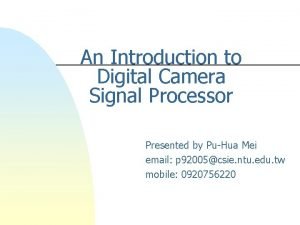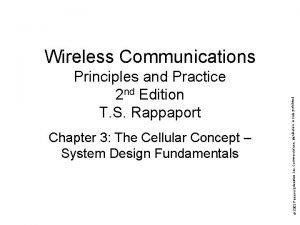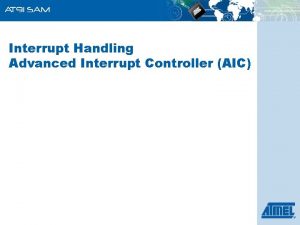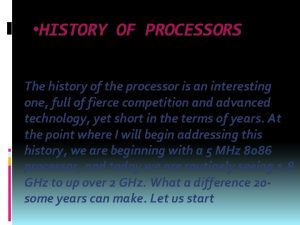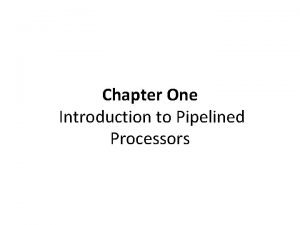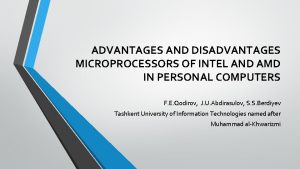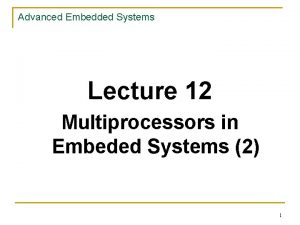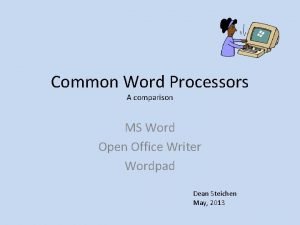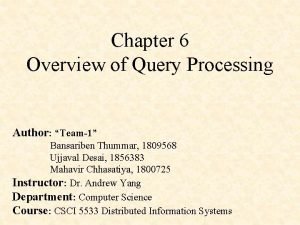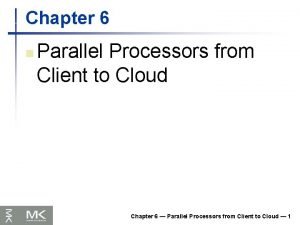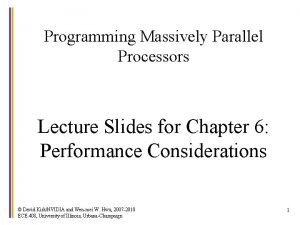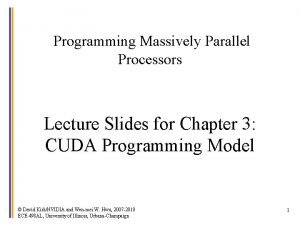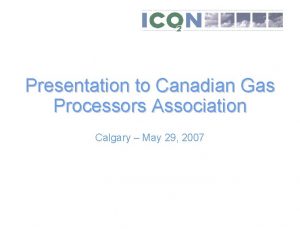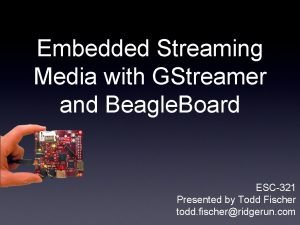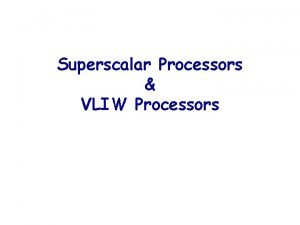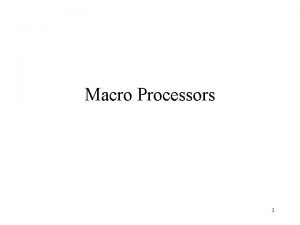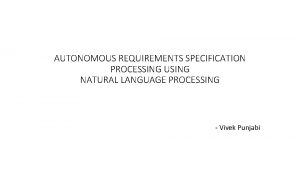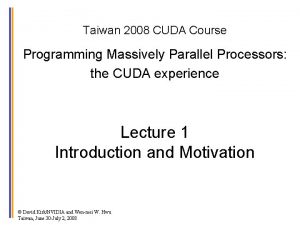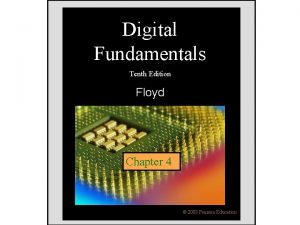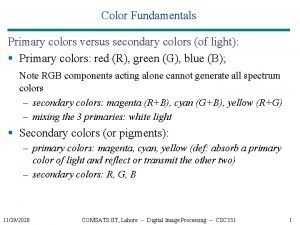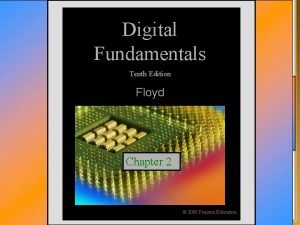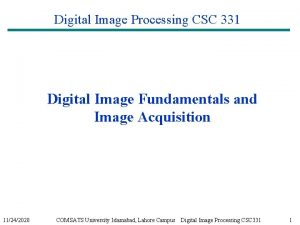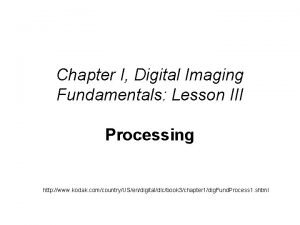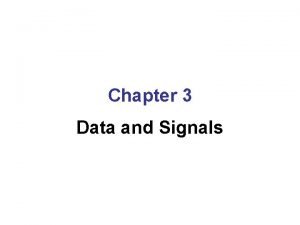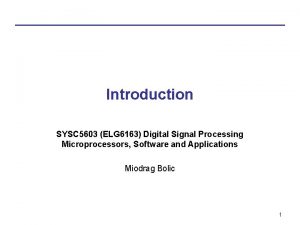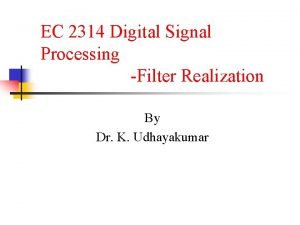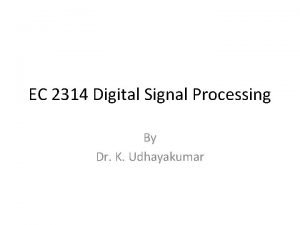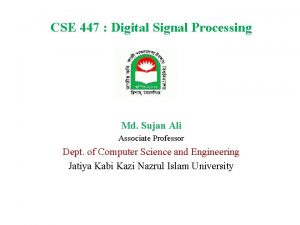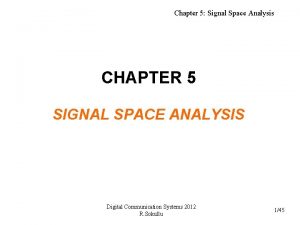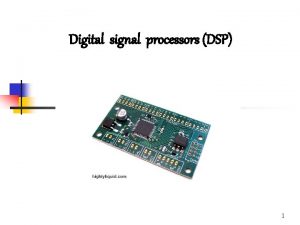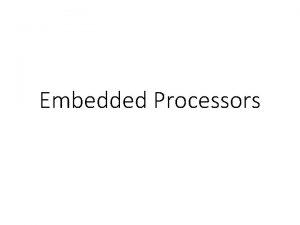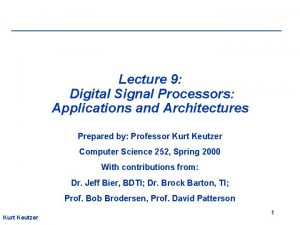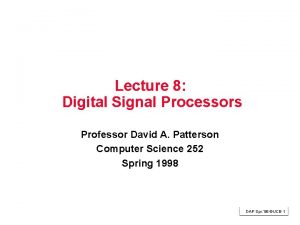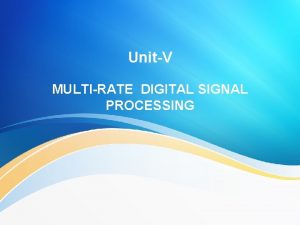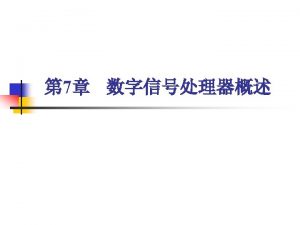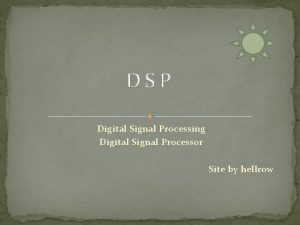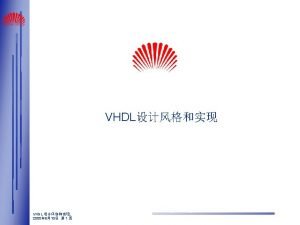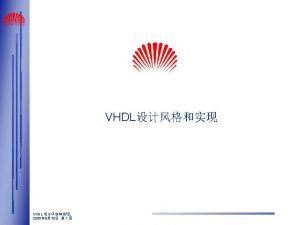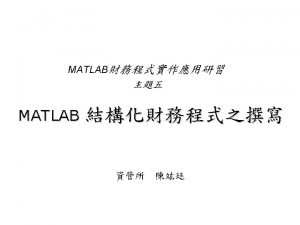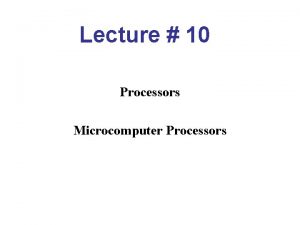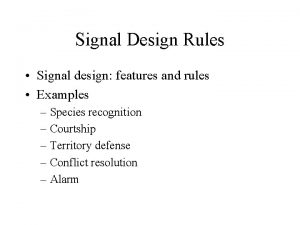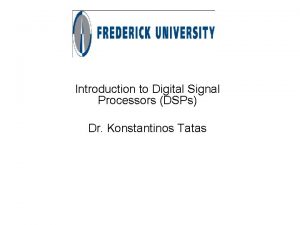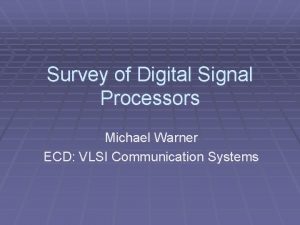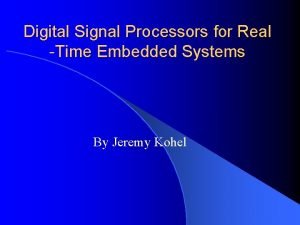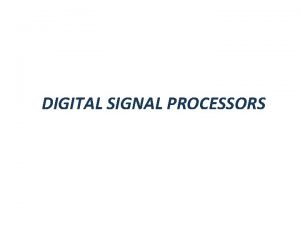Digital Signal Processors fundamentals system design Lecture 1





![1. 2 Use in accelerators § Diagnostics § Machine protection § Control beam [LLRF] 1. 2 Use in accelerators § Diagnostics § Machine protection § Control beam [LLRF]](https://slidetodoc.com/presentation_image/64820d07c8be70a9fe95f9f41e97d645/image-6.jpg)



![2. 1 DSPs evolution: device integration 1980 Die size [mm] 1990 2000 ≥ 2010 2. 1 DSPs evolution: device integration 1980 Die size [mm] 1990 2000 ≥ 2010](https://slidetodoc.com/presentation_image/64820d07c8be70a9fe95f9f41e97d645/image-10.jpg)
![2. 1 DSPs evolution: device integration [2] TI ‘C 6713 § Technology : 0. 2. 1 DSPs evolution: device integration [2] TI ‘C 6713 § Technology : 0.](https://slidetodoc.com/presentation_image/64820d07c8be70a9fe95f9f41e97d645/image-11.jpg)

![2. 2 Current mainstream DSPs [2] Low-cost fixed point DSPs Applications: Audio, controls, power 2. 2 Current mainstream DSPs [2] Low-cost fixed point DSPs Applications: Audio, controls, power](https://slidetodoc.com/presentation_image/64820d07c8be70a9fe95f9f41e97d645/image-13.jpg)
![2. 2 Current mainstream DSPs [3] High-performance fixed point DSPs Applications: Telecom infrastructure, automotive, 2. 2 Current mainstream DSPs [3] High-performance fixed point DSPs Applications: Telecom infrastructure, automotive,](https://slidetodoc.com/presentation_image/64820d07c8be70a9fe95f9f41e97d645/image-14.jpg)
![2. 2 Current mainstream DSPs [4] Floating point DSPs Applications: Military, imaging, audio. Price 2. 2 Current mainstream DSPs [4] Floating point DSPs Applications: Military, imaging, audio. Price](https://slidetodoc.com/presentation_image/64820d07c8be70a9fe95f9f41e97d645/image-15.jpg)






![3. 2 Fast data access example: ‘C 6713 [2] ‘C 6713 memory mapping Address 3. 2 Fast data access example: ‘C 6713 [2] ‘C 6713 memory mapping Address](https://slidetodoc.com/presentation_image/64820d07c8be70a9fe95f9f41e97d645/image-22.jpg)























- Slides: 45

Digital Signal Processors: fundamentals & system design Lecture 1 Maria Elena Angoletta CERN Topical CAS/Digital Signal Processing Sigtuna, June 1 -9, 2007

Lectures plan Lecture 1 (now!) introduction, evolution, DSP core + peripherals Lecture 2 DSP peripherals (cont’d), s/w dev’pment & debug. Lecture 3 System optimisation, design & integration. M. E. Angoletta, “DSP fundamentals & system design – LECTURE 1”, CAS 2007, Sigtuna 2/45

Lecture 1 - outline Chapter 1: Introduction Chapter 2: DSP evolution & current scenery Chapter 3: DSP core architecture Chapter 4: DSP peripherals M. E. Angoletta, “DSP fundamentals & system design – LECTURE 1”, CAS 2007, Sigtuna 3/45

Chapter 1 topics Introduction 1. 1 Overview 1. 2 Use in accelerators M. E. Angoletta, “DSP fundamentals & system design – LECTURE 1”, CAS 2007, Sigtuna 4/45

1. 1 Overview Digital Signal Processor (DSP): μ-processor for DSPing applications. Characteristics § Real-time data processing § Deterministic operation § High throughput § Re-programmable by s/w Key enabling technology for many electronics products: § Comms: broadband & wireless § Automotive: audio, driver assistance… § Consumer: security, entertainment, toys § Instrumentation: medical, test/measurement … § Military/aerospace: radar, target detection … M. E. Angoletta, “DSP fundamentals & system design – LECTURE 1”, CAS 2007, Sigtuna 5/45
![1 2 Use in accelerators Diagnostics Machine protection Control beam LLRF 1. 2 Use in accelerators § Diagnostics § Machine protection § Control beam [LLRF]](https://slidetodoc.com/presentation_image/64820d07c8be70a9fe95f9f41e97d645/image-6.jpg)
1. 2 Use in accelerators § Diagnostics § Machine protection § Control beam [LLRF] power supplies motors DSP system example: classical controls structure. M. E. Angoletta, “DSP fundamentals & system design – LECTURE 1”, CAS 2007, Sigtuna 6/45

Chapter 2 topics DSP evolution & current scenery 2. 1 DSP evolution 2. 2 Current mainstream DSPs Summary M. E. Angoletta, “DSP fundamentals & system design – LECTURE 1”, CAS 2007, Sigtuna 7/45

2. 1 DSPs evolution: h/w features TMS 320 C 40 TMS 320 C 6 xxx BLACKFIN TMS 320 C 10 MPD 7720 Tiger. SHARC DSP 56000 TMS 320 C 5 xxx AT&TDSP 32 1980 1990 DEVELOPMENT 2000 CONSOLIDATION § Harvard architecture § Parallel architectures § Data format: § Fewer manufacturers v v early ’ 80 s: fixed point § Multiprocessing support late ’ 80 s: floating point (often non IEEE). § Late ’ 90 s: improved debug capabilities (ex: RTDX) § DMA § Fixed-width instruction set § Trend: wider/few families for code compatibility. M. E. Angoletta, “DSP fundamentals & system design – LECTURE 1”, CAS 2007, Sigtuna 8/45

2. 1 DSP evolution: s/w tools § Spectacular evolution! § Advanced compilers q q Deal with h/w complexity Efficient high-level languages § Graphical programming q q MATLAB NI Lab. VIEW DSP Module (Hyperception RIDE) Code Composer for TI ‘C 40 DSPs (CERN, 1999) § High-performance simulators, emulators & debugging facilities q High-visibility into target (~no interferences) q Multiple DSP development & debugging in same JTAG chain. M. E. Angoletta, “DSP fundamentals & system design – LECTURE 1”, CAS 2007, Sigtuna 9/45
![2 1 DSPs evolution device integration 1980 Die size mm 1990 2000 2010 2. 1 DSPs evolution: device integration 1980 Die size [mm] 1990 2000 ≥ 2010](https://slidetodoc.com/presentation_image/64820d07c8be70a9fe95f9f41e97d645/image-10.jpg)
2. 1 DSPs evolution: device integration 1980 Die size [mm] 1990 2000 ≥ 2010 50 50 5 Technology [μm] 3 0. 8 0. 1 0. 02 MIPS 5 40 50000 20 80 10000 RAM [Bytes] 256 2000 32000 1 million Price [$] 150 15 5 0. 15 Power [m. W/MIPS] 250 12. 5 0. 1 0. 001 500000 5 million 60 million 12 12 MHz Transistors Wafer size [in. ] 3 6 ED CT S JE E O LU PR VA 50 M. E. Angoletta, “DSP fundamentals & system design – LECTURE 1”, CAS 2007, Sigtuna 10/45
![2 1 DSPs evolution device integration 2 TI C 6713 Technology 0 2. 1 DSPs evolution: device integration [2] TI ‘C 6713 § Technology : 0.](https://slidetodoc.com/presentation_image/64820d07c8be70a9fe95f9f41e97d645/image-11.jpg)
2. 1 DSPs evolution: device integration [2] TI ‘C 6713 § Technology : 0. 13 μm/6 -level metal CMOS. § Voltages: core supply = 1. 26 V; I/O supply = 3. 3 V. § Core frequency: up to 225 MHz. § Packages: 256 -pin ball grid array or 208 -pin plastic quad flatpack. § Operating voltage decrease (5 V → 1. 5 V): q q Lower power consumption Faster logic level transitions Electromigration: higher speed increases performance but decreases chip durability M. E. Angoletta, “DSP fundamentals & system design – LECTURE 1”, CAS 2007, Sigtuna 11/45

2. 2 Current mainstream DSPs 3 main manufacturers: Texas Instruments (TI), Analog Devices (ADI) & Freescale semiconductor (formerly Motorola). Mostly used for accelerators – TI & ADI TI DSP families: TMS 320 Cxxxx § ‘C 2 x: digital signal controller. § ‘C 5 x: power-efficient. § ‘C 6 x: high-performance. ADI DSP families: § SHARC: first ADI family (now 3 generations). § Tiger. SHARC: high-performance for multiprocessor systems. § Blackfin: high-performance, low power. M. E. Angoletta, “DSP fundamentals & system design – LECTURE 1”, CAS 2007, Sigtuna 12/45
![2 2 Current mainstream DSPs 2 Lowcost fixed point DSPs Applications Audio controls power 2. 2 Current mainstream DSPs [2] Low-cost fixed point DSPs Applications: Audio, controls, power](https://slidetodoc.com/presentation_image/64820d07c8be70a9fe95f9f41e97d645/image-13.jpg)
2. 2 Current mainstream DSPs [2] Low-cost fixed point DSPs Applications: Audio, controls, power supplies, consumer. Chip Price [$] (*) Data format [bit] Max freq. [MHz] On-chip memory [KByte] Rivals Notes Only mainstream DSP with 24 -bit fixed point. Freescale DSP 563 xx 4 -47 24 275 24 K– 648 K SHARC, ‘C 67 Freescale DSP 5685 x 3 -20 18 120 20 K– 612 K ‘C 28 x TI ‘C 24 x / ’C 28 x 2 -8 3 -14 16 32 40 150 13 K– 69 K 40 K-294 K DSP 5685 x TI ‘C 55 x 4 -17 16 300 80 K– 376 K Blackfin (*): Hybrid μcontroller-DSP Q 3 2006 price for 10 K units. M. E. Angoletta, “DSP fundamentals & system design – LECTURE 1”, CAS 2007, Sigtuna 13/45
![2 2 Current mainstream DSPs 3 Highperformance fixed point DSPs Applications Telecom infrastructure automotive 2. 2 Current mainstream DSPs [3] High-performance fixed point DSPs Applications: Telecom infrastructure, automotive,](https://slidetodoc.com/presentation_image/64820d07c8be70a9fe95f9f41e97d645/image-14.jpg)
2. 2 Current mainstream DSPs [3] High-performance fixed point DSPs Applications: Telecom infrastructure, automotive, video. Chip Price [$] (*) Data format [bit] Max freq. [MHz] On-chip memory [Byte] Rivals ADI Blackfin 5 -60 16 750 84 K-328 K ‘C 55 x, ‘C 64 x Freescale MSC 71 xx/ MSC 81 xx 13 -184 16 300 1000 88 K– 472 K 10. 7 M ‘C 64 x, Blackfin TI ‘C 64 x / 15 -208 ’C 64 x+ 180 -260 (*): 16 1000 MSC 81 xx/ 160 K– 2112 K MSC 71 xx Notes Most chips are quad-core. Adds 4 - or 8 MAC features to ‘C 62 x Q 3 2006 price for 10 K units. M. E. Angoletta, “DSP fundamentals & system design – LECTURE 1”, CAS 2007, Sigtuna 14/45
![2 2 Current mainstream DSPs 4 Floating point DSPs Applications Military imaging audio Price 2. 2 Current mainstream DSPs [4] Floating point DSPs Applications: Military, imaging, audio. Price](https://slidetodoc.com/presentation_image/64820d07c8be70a9fe95f9f41e97d645/image-15.jpg)
2. 2 Current mainstream DSPs [4] Floating point DSPs Applications: Military, imaging, audio. Price [$] (*) Data format [bit] ADI Tiger. SHARC [MHz] On-chip memory [Byte] Rivals Notes 130205 32 float. & 16 fixed point 600 512 K– 3 M ‘C 67 x, SHARC VLIW + SIMD. On-chip DRAM. ADI SHARC 5 -15 32 200 512 K– 768 K ‘C 67 x SIMD + multiprocessing TI ‘C 67 x/’C 67 x+ 1230 16 K– 288 K Tiger. SHARC, SHARC Floating point version of ‘C 62 x Chip (*): 32 Max freq. 300 Q 3 2006 price for 10 K units. M. E. Angoletta, “DSP fundamentals & system design – LECTURE 1”, CAS 2007, Sigtuna 15/45

Chapter 2 summary § DSPs born early ’ 80 s: fast, real-time, deterministic processing. § Spectacular evolution in software tools. q Compilers allow efficient high-level. q Graphical DSP programming (rapid prototyping). § Great evolution in device integration. q Operating voltage decrease: lower power consumption & faster logic. q Core frequency increase. q Beware: electromigration § Main families for accelerator applications: ADI & TI. M. E. Angoletta, “DSP fundamentals & system design – LECTURE 1”, CAS 2007, Sigtuna 16/45

Chapter 3 topics DSP core architecture 3. 1 Introduction 3. 2 Fast data access 3. 3 Fast computation 3. 4 Numerical fidelity 3. 5 Fast-execution control Summary M. E. Angoletta, “DSP fundamentals & system design – LECTURE 1”, CAS 2007, Sigtuna 17/45

3. 1 DSP core architecture: intro Shaped by predictable real -time DSPing ! Requirements ex: FIR How 3. 2 Fast data access High-BW memory architectures. Specialised addressing modes. Direct Memory Access (DMA). 3. 3 Fast computation MAC-centred. Pipelining. Parallel architectures (VLIW, SIMD). 3. 4 Numerical fidelity Wide accumulator regs, guard bits. . 3. 5 Fast-execution control H/w assisted zero-overhead loops, shadow registers … M. E. Angoletta, “DSP fundamentals & system design – LECTURE 1”, CAS 2007, Sigtuna 18/45

3. 2 Fast data access a) High-BW memory architectures DSP chip PROGRAM PM address bus MEMORY instructions & data DM address bus Instruction cache PM data bus DSP core DM data bus DATA MEMORY data only Harvard + cache = Super Harvard Architecture → SHARC § Builds upon Harvard architecture & improves throughput. § More buses than for Von Neumann: efficient but expensive. § Instruction cache: loops instructions pre-fetched & buffered. → memory BW used for data fetch. § Data cache on newer DSPs. M. E. Angoletta, “DSP fundamentals & system design – LECTURE 1”, CAS 2007, Sigtuna 19/45

3. 2 Fast data access a) High-BW memory architectures – cont’d. Hierarchical memory architecture Cache limitations: unpredictability of cache hits → difficult worst case scenario prediction. NB: user may lock cache for deterministic execution of critical sections. M. E. Angoletta, “DSP fundamentals & system design – LECTURE 1”, CAS 2007, Sigtuna 20/45

3. 2 Fast data access example: ‘C 6713 cache § 2 -level cache architecture, Level 1 (L 1) & Level 2 (L 2). § L 1 cache: 8 KByte total q 4 KByte program cache (L 1 P) q 4 KByte data cache (L 1 D) § L 2 cache: 256 Kbyte total q q 64 KByte dual cache: mapped memory, cache or combination of the two. 192 KByte mapped SRAM. TI ‘C 6713 cache architecture M. E. Angoletta, “DSP fundamentals & system design – LECTURE 1”, CAS 2007, Sigtuna 21/45
![3 2 Fast data access example C 6713 2 C 6713 memory mapping Address 3. 2 Fast data access example: ‘C 6713 [2] ‘C 6713 memory mapping Address](https://slidetodoc.com/presentation_image/64820d07c8be70a9fe95f9f41e97d645/image-22.jpg)
3. 2 Fast data access example: ‘C 6713 [2] ‘C 6713 memory mapping Address ranges as seen by DSP (*): development board for DSP lab. M. E. Angoletta, “DSP fundamentals & system design – LECTURE 1”, CAS 2007, Sigtuna 22/45

3. 2 Fast data access b) Specialised addressing modes Data Address Generator (DAG) DAG manages address update in DSP-common patterns. PM address bus PROGRAM MEMORY PM data address generator Instruction cache instructions & data PM data bus DSP chip DM data address DM address bus generator DATA MEMORY Program sequencer DSP core data only DM data bus § Addressing examples: Circular : read & write pointers managed by h/w. Bit-reversed : FFT-computation. M. E. Angoletta, “DSP fundamentals & system design – LECTURE 1”, CAS 2007, Sigtuna 23/45

3. 2 Fast data access b) Specialised addressing modes – cont’d Circular addressing example: buffer wrap-around Bit-reversing addressing: data flow M. E. Angoletta, “DSP fundamentals & system design – LECTURE 1”, CAS 2007, Sigtuna 24/45

3. 2 Fast data access c) Direct Memory Access (DMA) DMA coprocessor: memory transfers without DSP core intervention PM address bus PROGRAM MEMORY PM data address generator Instruction cache instructions & data PM data bus DSP chip DM data address DM address bus generator Program sequencer DSP core § DMA transfers : q q DATA MEMORY data program (for code overlay) § Multiple channels (different priority). data only DM data bus DMA I/O, memory § Arbitration DSP core–DMA for colliding memory access. M. E. Angoletta, “DSP fundamentals & system design – LECTURE 1”, CAS 2007, Sigtuna 25/45

3. 2 Fast data access c) Direct Memory Access (DMA) – cont’d. DMA setup q register- or RAM-based. q typical info for setup § DMA transfer: triggered by DSP core or by event. § DMA can generate interrupt when transfer completed. M. E. Angoletta, “DSP fundamentals & system design – LECTURE 1”, CAS 2007, Sigtuna 26/45

3. 2 Fast data access c) Direct Memory Access (DMA) – cont’d. FLEXIBLE & POWERFUL CONFIGURATIONS Chained DMA Examples: DMA transfer completion starts new transfer. Data formatting Multi-dimensional data transfers available M. E. Angoletta, “DSP fundamentals & system design – LECTURE 1”, CAS 2007, Sigtuna 27/45

3. 3 Fast computation a) MAC-centered PM address bus PROGRAM MEMORY PM data address generator Instruction cache instructions & data PM data bus DSP chip DM data address DM address bus generator DATA MEMORY Program sequencer DSP REGISTERS normal/extended precision data only DM data bus DMA MULTIPLIER ALU I/O, memory SHIFTER M. E. Angoletta, “DSP fundamentals & system design – LECTURE 1”, CAS 2007, Sigtuna 28/45

3. 3 Fast computation a) MAC-centered cont’d Registers: intermediate & final results, counters. Shadow registers in some DSPs (ex: ADI SHARC) for fast context switch. Multiplier: Multiplier one instruction cycle multiplication (& accumulation). Arithmetic Logic Unit (ALU): (ALU) one instruction cycle ops. (basic arithmetic & logical). Shifter (simple / barrel): barrel) shifts (scaling) & rotates. M. E. Angoletta, “DSP fundamentals & system design – LECTURE 1”, CAS 2007, Sigtuna 29/45

3. 3 Fast computation b) Pipelining v instruction execution divided into stages. v execution of stages for different instructions overlapped in time. Basic pipeline stages M. E. Angoletta, “DSP fundamentals & system design – LECTURE 1”, CAS 2007, Sigtuna 30/45

3. 3 Fast computation b) Pipelining – cont’d time 1 instruction CPU type Processing time gain Fully-loaded pipeline § Pipeline full → fast instruction fetch → L 1 & L 2 cache. M. E. Angoletta, “DSP fundamentals & system design – LECTURE 1”, CAS 2007, Sigtuna 31/45

3. 3 Fast computation b) Pipelining – cont’d § Processors may add more sub-stages. q Smaller steps → faster processor clock speed C 6713 pipelining 4 fetch stages. Fetch-packet = 8 instructions. 2 decode stages. Up to 10 execution stages. Pipelining limitations: § Efficient BUT complex to program → compiler/scheduler effort. § Branch effects: effects flow change (branch/interrupt) → pipeline flush § Resource conflicts: conflicts two or more instructions need same h/w. § Data hazards: hazards instruction needs result of previous instruction. → difficult worst case scenario prediction. M. E. Angoletta, “DSP fundamentals & system design – LECTURE 1”, CAS 2007, Sigtuna 32/45

3. 3 Fast computation c) Parallel architectures Increased parallelism improves performance. Very Long Instruction Words (VLIW): § Instruction-level parallelism (ILP): (ILP) multiple execution units, each executes its own instruction. § Innovative architecture – first used in ‘C 62 xx (1997) Veloci. TI. § “Multi issue” DSPs: many instructions issued @same time. Single Input Multiple Data (SIMD): § Data-level parallelism (DLP): (DLP) one instruction performs same operation on multiple data sets. § Technique used within other architectures (ex: VLIW). § “Single-issue”: one instruction issued @same time. M. E. Angoletta, “DSP fundamentals & system design – LECTURE 1”, CAS 2007, Sigtuna 33/45

3. 3 Fast computation c) Parallel architectures: VLIW § Simple & regular instructions set. § Wide “global” instructions. § Deterministic behaviour: scheduling @compile-time (i. e. static) NOT @processing-time. TI ‘C 6000 VLIW architecture Plus q Increased performance for many algorithms Minus q Deep pipelines & long latencies: peak performance elusive. q Scalable. q High memory use/power consumption. q Good compiler target. q Assembly: complex to hand-optimise. M. E. Angoletta, “DSP fundamentals & system design – LECTURE 1”, CAS 2007, Sigtuna 34/45

3. 3 Fast computation c) Parallel architectures: SIMD § Each instruction performs lotsa work. § May support multiple data width. § SIMD can be ON/OFF SIMD typical architecture: SHARC “Hammerhead” Plus q q Minus Effective on large data blocks. q Applicable to other architectures, ex: Tiger. SHARC (VLIW + SIMD). q Parallel algorithms only → reorganisation penalties. High program-memory usage. M. E. Angoletta, “DSP fundamentals & system design – LECTURE 1”, CAS 2007, Sigtuna 35/45

3. 4 Numerical fidelity § Wide accumulators/registers for precision & overflow avoidance: guard bits. § Overflow/underflow flags. § Saturated arithmetic when overflowing. § Floating point arithmetic: high dynamic range/precision. 32 ts bi M. E. Angoletta, “DSP fundamentals & system design – LECTURE 1”, CAS 2007, Sigtuna 36/45

3. 5 Fast-execution control § Zero-overhead looping via specialised instructions (ex: RPTB). § Fast/deterministic interrupt servicing. Important as DSP systems often interrupt-driven. q Interrupts : internal/external (DSP pins). q Latency = delay [interrupt pin active → first ISR instruction executed]. q DSP stops current activity (if higher priority interrupt) & starts ISR. q DSP must save info related to previous activity (context). q Often many user-selectable interrupt dispatchers (→ saved context). Example: SHARC (ADSP 21160 M, 80 MHz, 12. 5 ns cycle) ISR uses secondary register set M. E. Angoletta, “DSP fundamentals & system design – LECTURE 1”, CAS 2007, Sigtuna 37/45

3. 6 DSP core example: TI ‘C 6713 Peripherals C 6713 DSP Yellow box: C 6713 DSP core. White boxes: parts common to all C 6000 devices. Grey boxes: additional features on the C 6713 DSP. M. E. Angoletta, “DSP fundamentals & system design – LECTURE 1”, CAS 2007, Sigtuna 38/45

Chapter 3 summary § DSP core characteristics shaped by predictable real-time DSPing. § Fast data access q High-BW memory architecture q Specialised addressing modes q Direct Memory Access (DMA) § Fast computation q MAC-centred q Pipelining q Parallel architectures (VLIW, SIMD) § Numerical fidelity q wide accumulator registers, guard bits… § Fast-execution control q h/w assisted zero-overhead loops, shadow registers… M. E. Angoletta, “DSP fundamentals & system design – LECTURE 1”, CAS 2007, Sigtuna 39/45

Chapter 4 topics DSP peripherals 4. 1 Introduction 4. 2 Interconnect & I/O 4. 3 Services Today 4. 4 C 6713 example 4. 5 Memory interfacing 4. 6 Data converter interfacing 4. 7 DSP Booting Tomorrow Summary M. E. Angoletta, “DSP fundamentals & system design – LECTURE 1”, CAS 2007, Sigtuna 40/45

4. 1 Introduction § Available peripherals: important factor for DSP choice. q Interconnect & I/O. Potential bottleneck! q Services: timers, PLL, power management, booting logic. § Embedded peripherals: Fast performance Less flexible across applications Low power consumption Unit cost may be higher § Terrific evolution q Few parallel & serial ports initially. q Now support for audio/video streaming applications. § Often not enough pins on DSP chip → multiplexed! Select desired peripherals @ DSP boot [→ C 6713]. M. E. Angoletta, “DSP fundamentals & system design – LECTURE 1”, CAS 2007, Sigtuna 41/45

4. 2 Interconnect & I/O Some connectivity: § GPIO § Host Processor Interface § PCI Some serial interfaces: § Serial Peripheral Interface (SPI): § Universal Asynchronous Receiver-Transmitter (UART) § Controller Area Network (CAN) § Multichannel Buffered Serial Ports (Mc. BSP) § Multichannel Audio Serial Port (Mc. ASP) Many transmit/receive data sizes Some parallel interfaces: Linkports [ADI]: DSP-DSP or DSP-peripheral communication M. E. Angoletta, “DSP fundamentals & system design – LECTURE 1”, CAS 2007, Sigtuna 42/45

4. 3 Services § Timers: pulses / interrupts generation. § Power management: reduces clock to reduce power consumption. § DSP booting mode [→next lecture] & configuration logic § PLL controller: generates clock for DSP core & peripherals from internal/external clock. § Interrupt selector: Selects interrupts to send to the CPU. Can also change their polarity. § JTAG: allows emulation & debug [→ chapter 7]. JTAG 14 -pin header M. E. Angoletta, “DSP fundamentals & system design – LECTURE 1”, CAS 2007, Sigtuna 43/45

4. 5 Example: C 6713 DSP 2 units C 6713 DSP Yellow box: C 6713 DSP peripherals. White boxes: parts common to all C 6000 devices. Grey boxes: additional features on the C 6713 DSP. M. E. Angoletta, “DSP fundamentals & system design – LECTURE 1”, CAS 2007, Sigtuna 44/45

Chapter 4 (partial) summary § Peripherals: wide range & important parameters for DSP choice. § Interconnect & data I/O: serial + parallel interfaces. § Services: PLL, timers, JTAG, power management… TO BE CONTINUED TOMORROW M. E. Angoletta, “DSP fundamentals & system design – LECTURE 1”, CAS 2007, Sigtuna 45/45
 Digital signal as a composite analog signal
Digital signal as a composite analog signal Digital camera processors
Digital camera processors Data encoding techniques in computer networks
Data encoding techniques in computer networks Network systems design using network processors
Network systems design using network processors 01:640:244 lecture notes - lecture 15: plat, idah, farad
01:640:244 lecture notes - lecture 15: plat, idah, farad System design fundamentals
System design fundamentals Baseband signal and bandpass signal
Baseband signal and bandpass signal Baseband signal and bandpass signal
Baseband signal and bandpass signal Classification of signals
Classification of signals Programming massively parallel processors
Programming massively parallel processors Difference between linear and non linear pipeline
Difference between linear and non linear pipeline Aicarm
Aicarm The history of cpu
The history of cpu Handlers classification of parallel computing structure
Handlers classification of parallel computing structure Disadvantages of amd processor
Disadvantages of amd processor Embeded processors
Embeded processors Embedded innovator winter 2010
Embedded innovator winter 2010 Comparison of word processors
Comparison of word processors Distributed query processing
Distributed query processing Parallel processors from client to cloud
Parallel processors from client to cloud Programming massively parallel processors
Programming massively parallel processors Programming massively parallel processors
Programming massively parallel processors Gas processors association
Gas processors association Beagleboard embedded processors
Beagleboard embedded processors Single pass macro processor
Single pass macro processor Superscalar machine
Superscalar machine Macro processors
Macro processors Language and processors for requirement
Language and processors for requirement Introduction of telecommunication
Introduction of telecommunication Programming massively parallel processors, kirk et al.
Programming massively parallel processors, kirk et al. Digital fundamentals chapter 4
Digital fundamentals chapter 4 Floyd digital fundamentals 10th edition pdf
Floyd digital fundamentals 10th edition pdf Digital fundamentals floyd
Digital fundamentals floyd Color fundamentals in digital image processing
Color fundamentals in digital image processing Floyd digital fundamentals ppt
Floyd digital fundamentals ppt Digital fundamentals answers
Digital fundamentals answers Digital image processing
Digital image processing Fundamentals of digital imaging
Fundamentals of digital imaging Digital vs analog signal
Digital vs analog signal Digital signal 3
Digital signal 3 For digital
For digital Signal processing development kit presentation
Signal processing development kit presentation Ec2314 digital signal processing
Ec2314 digital signal processing Digital signal processing
Digital signal processing Cse 447
Cse 447 Conversion of continuous awgn channel to vector channel
Conversion of continuous awgn channel to vector channel

